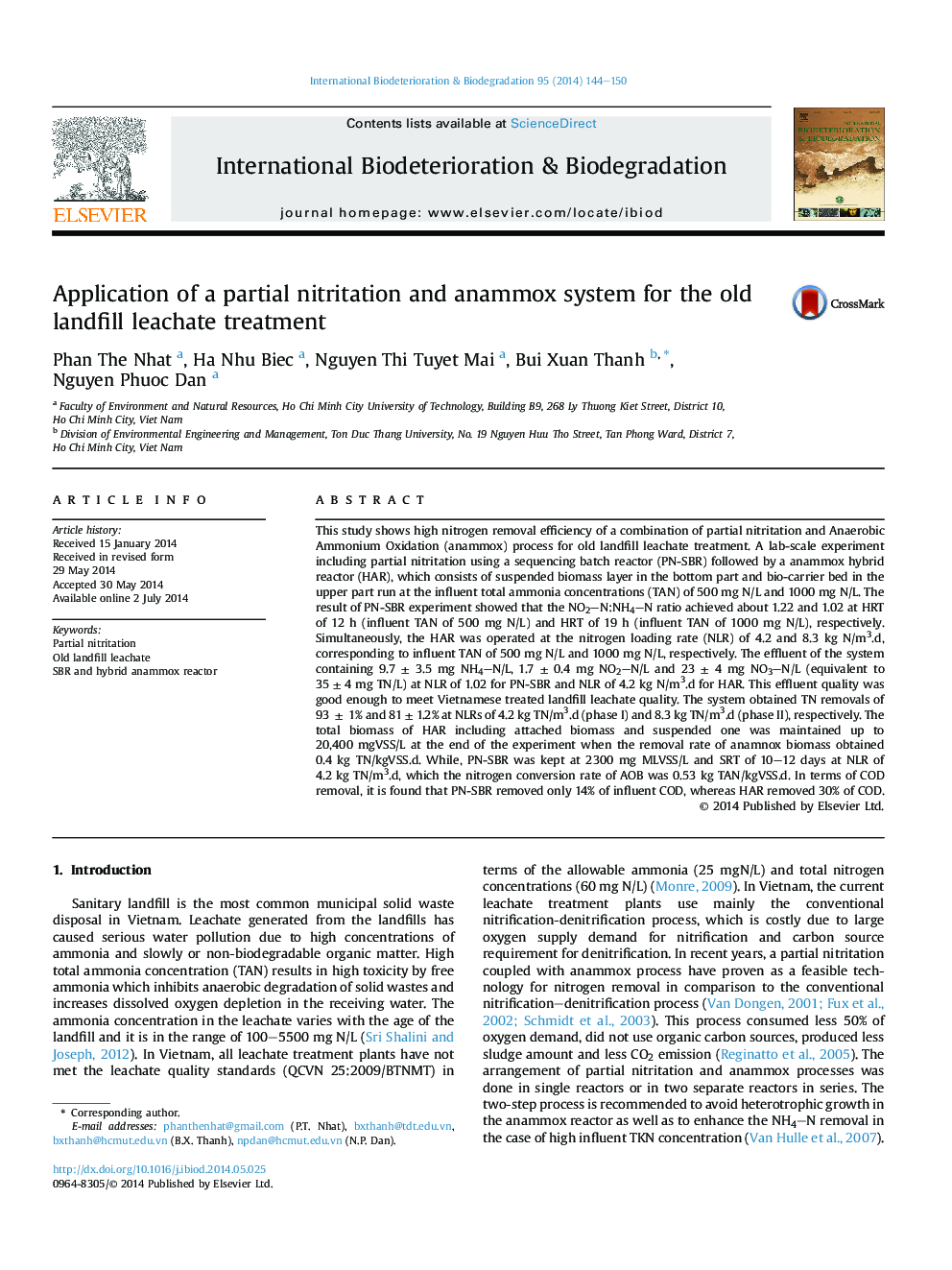| Article ID | Journal | Published Year | Pages | File Type |
|---|---|---|---|---|
| 4364615 | International Biodeterioration & Biodegradation | 2014 | 7 Pages |
•Partial nitritation SBR followed by a hybrid anammox reactor (HAR) to remove ammonia from leachate.•High nitrogen removal rate of the combined system was achieved in this study.•Removals of COD were 14% and 30% for the SBR and HAR, respectively.•Bacterial community of HAR was able to degrade slowly biodegradable compounds in the leachate.
This study shows high nitrogen removal efficiency of a combination of partial nitritation and Anaerobic Ammonium Oxidation (anammox) process for old landfill leachate treatment. A lab-scale experiment including partial nitritation using a sequencing batch reactor (PN-SBR) followed by a anammox hybrid reactor (HAR), which consists of suspended biomass layer in the bottom part and bio-carrier bed in the upper part run at the influent total ammonia concentrations (TAN) of 500 mg N/L and 1000 mg N/L. The result of PN-SBR experiment showed that the NO2–N:NH4–N ratio achieved about 1.22 and 1.02 at HRT of 12 h (influent TAN of 500 mg N/L) and HRT of 19 h (influent TAN of 1000 mg N/L), respectively. Simultaneously, the HAR was operated at the nitrogen loading rate (NLR) of 4.2 and 8.3 kg N/m3.d, corresponding to influent TAN of 500 mg N/L and 1000 mg N/L, respectively. The effluent of the system containing 9.7 ± 3.5 mg NH4–N/L, 1.7 ± 0.4 mg NO2–N/L and 23 ± 4 mg NO3–N/L (equivalent to 35 ± 4 mg TN/L) at NLR of 1.02 for PN-SBR and NLR of 4.2 kg N/m3.d for HAR. This effluent quality was good enough to meet Vietnamese treated landfill leachate quality. The system obtained TN removals of 93 ± 1% and 81 ± 1.2% at NLRs of 4.2 kg TN/m3.d (phase I) and 8.3 kg TN/m3.d (phase II), respectively. The total biomass of HAR including attached biomass and suspended one was maintained up to 20,400 mgVSS/L at the end of the experiment when the removal rate of anamnox biomass obtained 0.4 kg TN/kgVSS.d. While, PN-SBR was kept at 2300 mg MLVSS/L and SRT of 10–12 days at NLR of 4.2 kg TN/m3.d, which the nitrogen conversion rate of AOB was 0.53 kg TAN/kgVSS.d. In terms of COD removal, it is found that PN-SBR removed only 14% of influent COD, whereas HAR removed 30% of COD.
